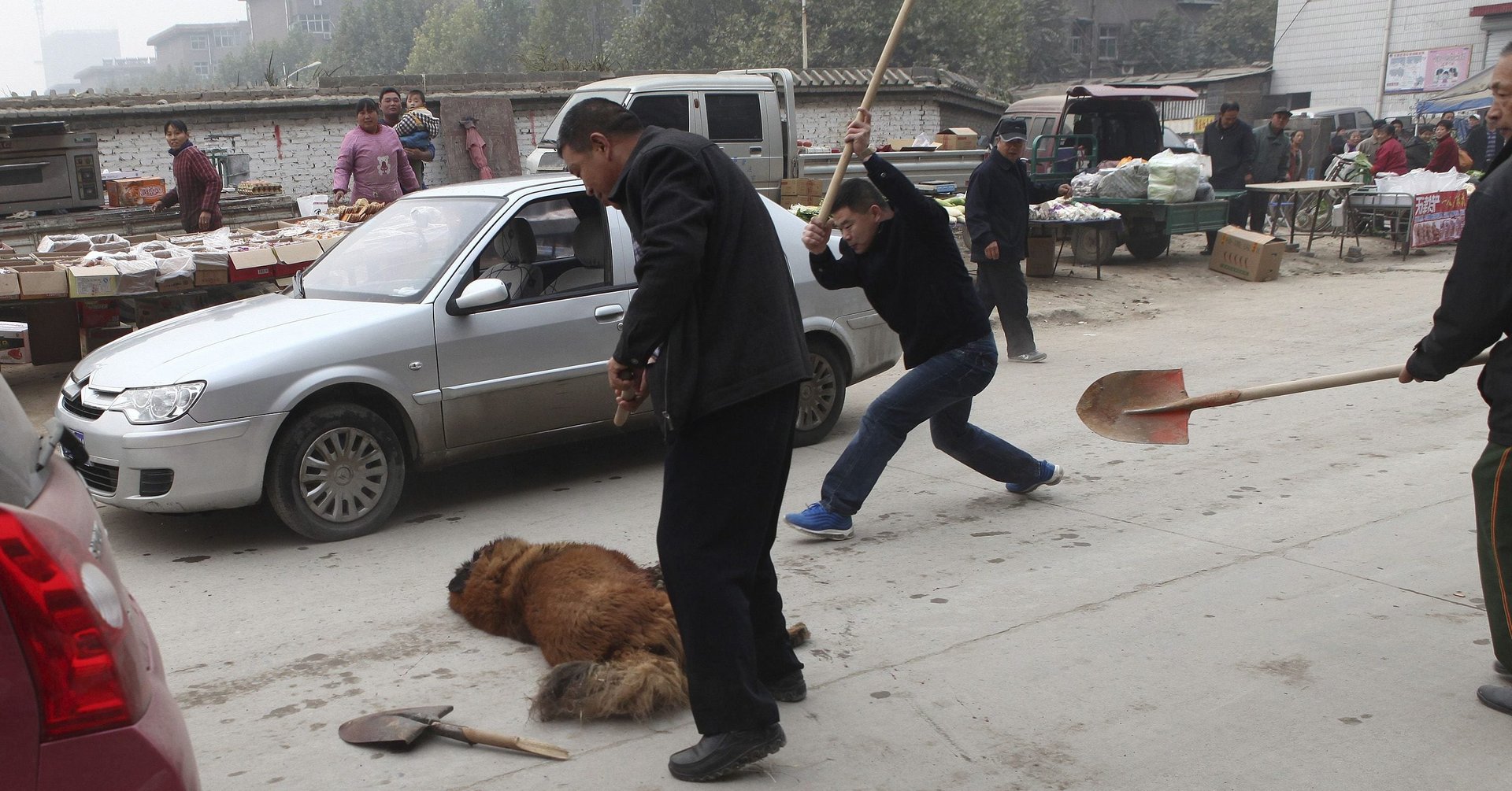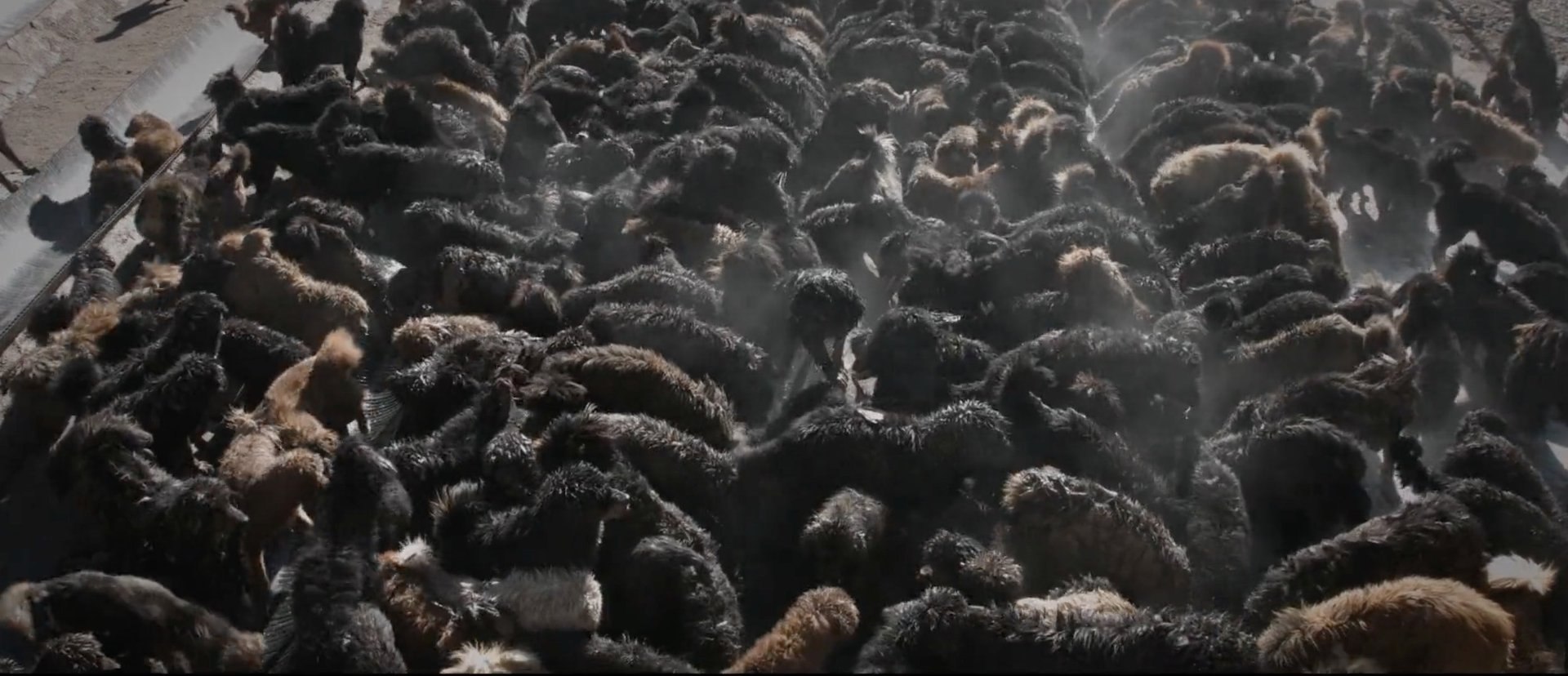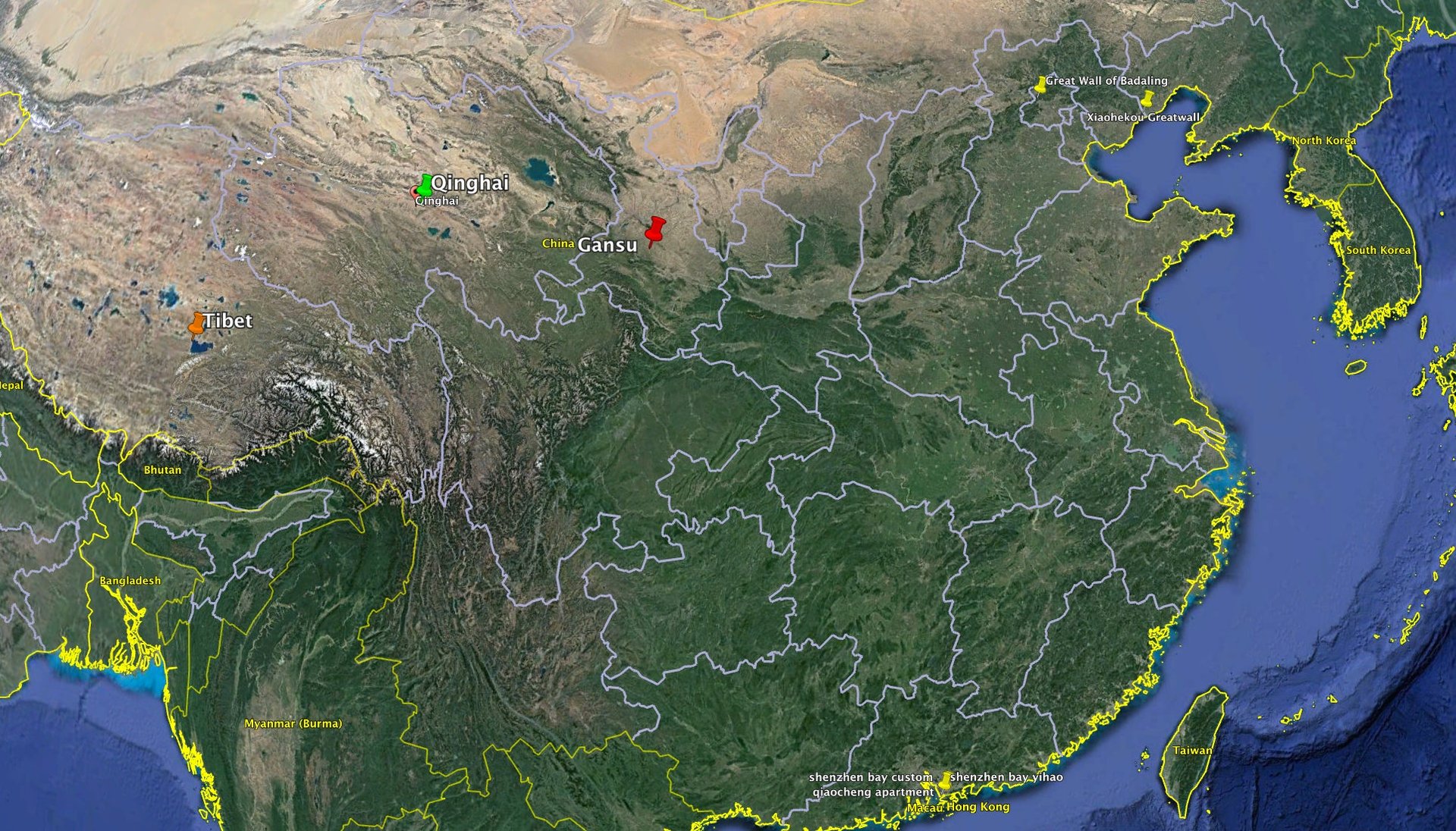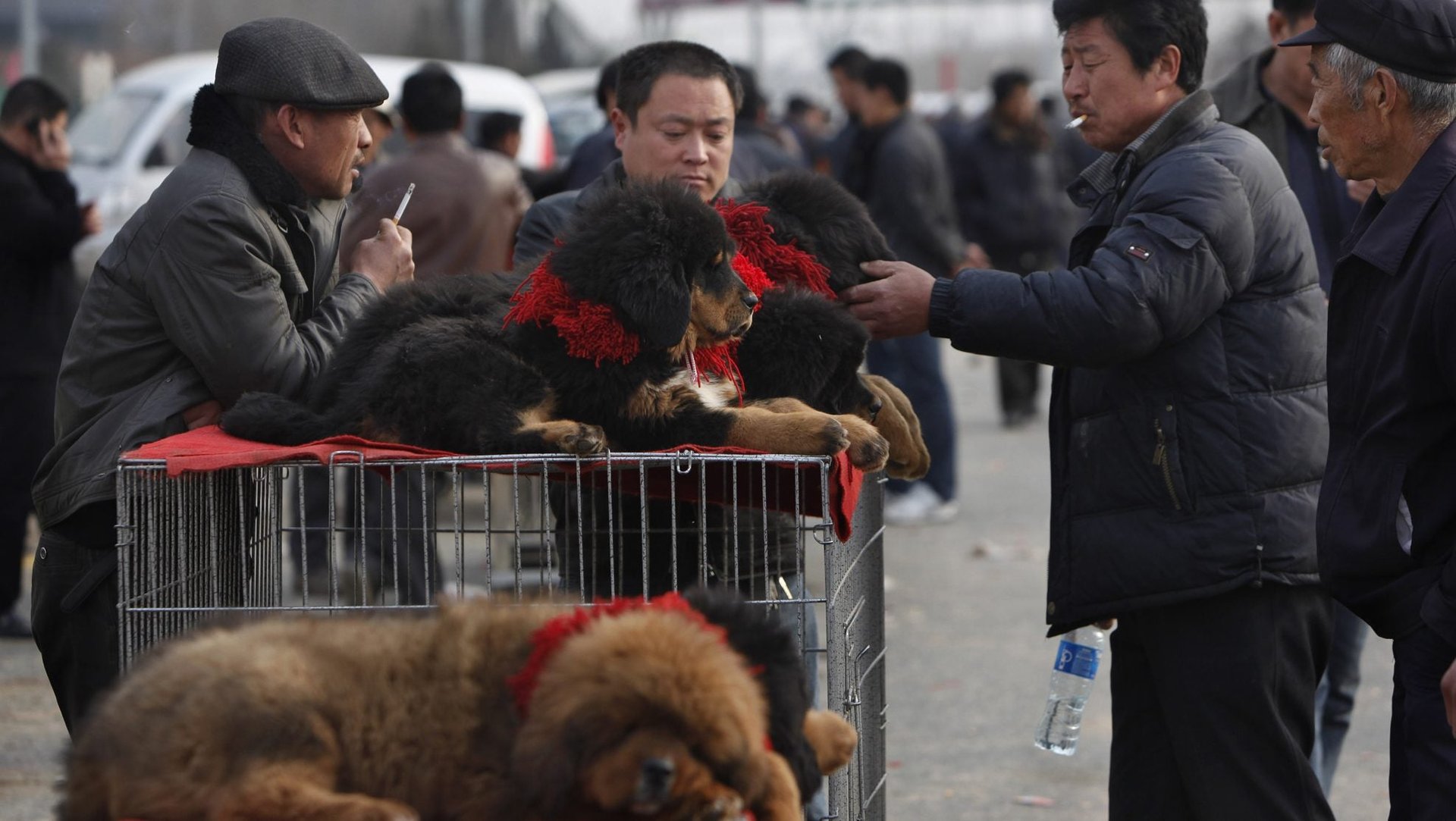Thousands of huge, aggressive dogs are roaming Tibet after their rich Chinese owners abandoned them
Tibet is full of unwanted dogs.


Tibet is full of unwanted dogs.
Areas of the Tibetan plateau have become flooded with giant, fluffy unwanted Tibetan mastiffs, once the most sought after dogs in China, after a collapse in the market for the dogs has left thousands homeless.
A scene captured in Abandoned Tibetan Mastiffs, a 20-minute long documentary which was released in April, shows hundreds of black Tibetan mastiffs crowded together in a shelter operated by a local monastery, waiting for their meals.

Gangri Neichog, a non-profit organization that helped produce the documentary, told The Beijing Youth Daily (link in Chinese), that more and more local officials and temples in Qinghai are setting up shelters like the Maozhuang one, as there has been an explosion in the number of abandoned dogs since 2013 when the craze for Tibetan mastiffs started to fade.
In Qinghai’s Guoluo prefecture alone, 14,000 of the 50,000 dogs in the area are strays, noted Gangri Neichog, speaking to the paper in August. Lhasa, capital of the Tibet autonomous region, also had some 13,000 stray dogs as of 2015, noted the newspaper. A shelter built in 2013 for 2,000 dogs in Lhasa now houses more than 7,000 dogs.
“You can say that the stray dog situation probably has a lot to do with the Tibetan mastiffs economy,” Yin Hang, founder of Gangri Neichog, said (link in Chinese) in the documentary. “The market hype has driven many to raise and breed Tibetan mastiffs with the mindset of getting rich overnight, but only very few have profited from the business.”
Mastiff mania
The craze for the furry dogs rose and fell with the Chinese economy’s trajectory. Around a decade ago, when China’s economy was rapidly growing, owning a Tibetan mastiff was a symbol of stature and wealth—two Tibetan mastiffs were sold for (link in Chinese) 18 million yuan ($2.7 million) at a luxury pet exhibition to a real-estate investor in Hangzhou in 2014. In 2009, a woman in Xian bought a Tibetan mastiff for 4 million yuan, and welcomed the dog’s delivery with a 30-car motorcade at the airport.

Breeders in Qinghai and Tibet, two impoverished regions of China, jumped on the mastiff craze, but many were left deeply disappointed. Zhou Yi, the general secretary of the Qinghai Tibetan mastiffs association, a government-backed organization, told Quartz that “only four to five businesses managed to earn more than 10 million yuan during the peak of the boom.” By 2015, two-thirds of the 3,000 mastiffs breeding centers in Tibet had shut down, with the annual trade in the dogs in Qinghai falling from a peak of over 200 million yuan in 2010 to less than 50 million yuan in 2015.
A resident in a prefecture in Qinghai said in the documentary that at the peak, people wouldn’t even sell their dogs for 2 million yuan. Li said that the price of a Tibetan mastiff can now be even below 10,000 yuan.
A cruel business
Many who bought the giant dogs found that the dogs were entirely unsuited to living in urban areas and especially small apartments, said Li Qun, a professor at Nanjing Agriculture University who studies animal husbandry history. Many brought mastiffs back home to the city, used them to breed, and them sold the puppies off for quick money, he added.

What’s more, Zhou of the Qinghai Tibetan mastiffs association said, many people in cities bought mastiffs from nomads in Tibet with no intention of raising them at all. “Some deliberately in-bred the dogs to make their offspring look more exotic,” he added, which in turn has created many dogs with health problems because of genetic disorders.
Samdrup, a nomad who traded Tibetan mastiffs in 2005 to 2006 when the market was booming, had hoped to ride the boom to get rich quick. But he soon discovered the cruelty of the business. A businessman in Lanzhou, the capital of Gansu province, approached Samdrup and bought five Tibetan mastiffs from him. The businessman had been keeping about 60 female Tibetan mastiffs when Samdrup went to visit him in Lanzhou. The businessman told Samdrup that most of the dogs were being slaughtered for meat, except for a few good breeds. During the visit, Samdrup even witnessed a dog being bashed with a hammer, hung from a hook, and then skinned alive, because “the meat would be delicious and nutritious,” Samdrup said in the documentary.

Samdrup said he cried for a long time after that, and now volunteers as an animal rescuer. He takes care of some 40 dogs, and had them sterilized.
The abandoned mastiffs are also a danger to the local human and animal population. Some dogs have attacked local residents, while others have been known to kill the native wild blue sheep as they compete with leopards for food, according to the documentary.
Buddhists are also against killing animals, making it hard to control the Tibetan mastiff population within a short period of time. Gangri Neichog, the NGO, suggested that every household adopt a dog so as to help shelters ease the burden.
“The debts created by humans are now being paid back with innocent lives,” said one commenter (link in Chinese) on social media site Weibo.